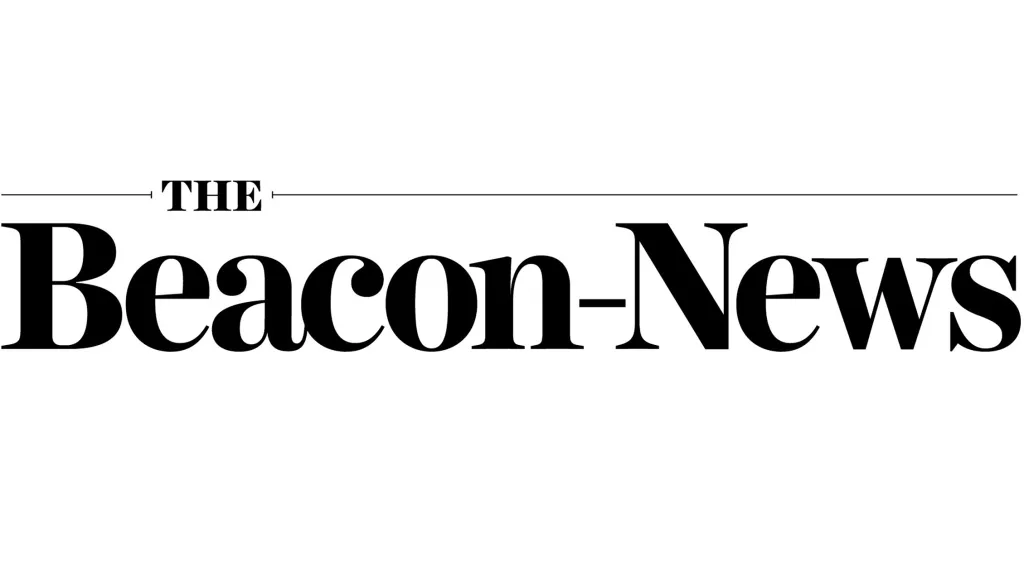
The Aurora Regional Economic Alliance is launching a new membership structure after it recently completed strategic planning.
The relatively-new economic development and chamber of commerce organization was formed near the start of this year from the merging of four local groups: Aurora Downtown, the Aurora Regional Chamber of Commerce, Invest Aurora and the Quad County African American Chamber of Commerce. However, the city of Aurora is currently looking at recreating a group like Aurora Downtown.
Up to this point, the Aurora Regional Economic Alliance has been in the midst of creating a strategic plan. That plan was formally approved by the organization’s board last week, Interim President and CEO Jenny Maltas told The Beacon-News in a recent interview.
The organization’s membership program was put on hold this year while it went through the strategic planning process, Maltas said. But with that planning now complete, the newly-overhauled membership structure is set to launch Oct. 1.
Under the new structure, businesses looking to become members of the Aurora Regional Economic Alliance can choose between five different levels of benefits with associated dues.
The lowest-cost annual package, called the “Engage” membership, will cost a business $495 and will get them listed on the Alliance’s online directory, access to the organization’s full membership database, special member pricing for ticketed programs and events plus free access to others, free promotion of the business’ events, job openings and news releases, cost savings programs, member-to-member discounts and eligibility for committees, councils and task forces.
That’s according to the Aurora Regional Economic Alliance’s website, which can be found at: www.aurorachamber.com
The Engage membership, which gives basic benefits, is geared toward nonprofits and for businesses with 10 or fewer employees, Maltas said. Going up from this package, members are offered more chances for their business to be seen.
The next highest package, the “Classic” membership, costs $975 and gives all the benefits of the Engage membership plus an enhanced directory listing with business name and logo, one footer ad in an Alliance e-newsletter, one ticket to the Legislative Luncheon and $250 in sponsorship credit.
The “Connect” annual membership package costs $1,950 and includes benefits from lower-priced packages plus one website ad, an anniversary social media post, two tickets to the Legislative Luncheon and $500 in sponsorship credit.
The second-to-highest package is the “Stakeholder” membership at $3,900. This membership level gives a business two website ads, its logo on a rotating website banner on the Alliance home webpage, two tickets to the Economic Outlook and $750 sponsorship credit, in addition to benefits from the other packages.
The “Premier” membership package, costing $7,500, will give businesses benefits from other packages as well as one spot in the Alliance’s Leadership Academy and $1,000 in sponsorship credit.
There is actually a level of membership above Premier, Maltas said, and those interested should talk with her directly.
Not all of the benefits promised by membership are expected to be available immediately, according to Maltas. The Alliance’s website notes several benefits set to come in 2026, including the cost savings programs, the member-to-member discounts as well as the committees, councils and task forces.
The tiered approach to membership was suggested by the organization’s newly-adopted Economic Development and Organizational Strategic Plan to serve a wide range of businesses with different needs, budgets and goals.
That recommendation was one of many in the strategic plan, which was completed by Texas-based TIP Strategies and is now available on the organization’s website.
Maltas said the document will serve as a guide for the Aurora Regional Economic Alliance over the next five years and beyond.
The recommendation to overhaul the organization’s membership structure was just a piece of the Membership and Funding strategic initiative, one of the eight initiatives outlined in the plan.
Under one of the other strategic initiatives, Business Advocacy, the plan suggested offering hands-on support to help companies cut through governmental red tape at the local and state level plus to launch a state and federal advocacy program to advance the interests of the regional business community.
For the Business Services and Resources strategic initiative, the plan recommended launching a comprehensive business retention and expansion program that would provide technical assistance and financial resources to local businesses. Aurora has long needed something like this, which is “the cornerstone of any economic development program,” the plan said.
The plan also recommended the Alliance serve as a regional “convener” and coordinator of workforce development, retention and attraction efforts as a part of the Workforce and Talent strategic initiative.
In addition to the new membership structure, the Membership and Funding initiative section of the plan also suggests the organization find diverse revenue sources to reduce its reliance on public funds and membership dues.
A core function of any chamber of commerce is to facilitate networking events, the plan said, and so one of the strategic initiatives was about these types of events. The plan recommends the Alliance do “high-impact networking opportunities” to build a more connected, competitive and collaborative business market.
Plus the Alliance should invest in producing high-quality research and analysis about the industries and topics that are important to the regional economy, the plan recommends under the Research and Analysis strategic initiative.
Long-term, the organization should also work to attract businesses, a fundamental part of a comprehensive economic development program, but it shouldn’t be the main focus of the organization, according to the plan’s Business Attraction strategic initiative.
Instead, the Aurora Regional Economic Alliance should spend the coming year on efforts to build up the organization, the plan said.
Industries to target with eventual business attraction efforts include advanced manufacturing, tech and professional services, data centers, retail and accommodations as well as transportation and logistics, the plan recommended.
And, the organization should work to build trust, visibility and engagement by communicating its value, impact and priorities, the plan said under the Strategic Communications strategic initiative.
In addition to outward-facing initiatives, the strategic plan also made various recommendations about the Aurora Regional Economic Alliance’s organizational structure. The needs that led to the creation of the Alliance require the organization to invest in building a strong team, the plan said.
It noted that the organization has already “undergone a significant staffing overhaul” that includes the departure of its first president and CEO, Kelly O’Brien, as well as most of the personnel who joined from the four organizations that formed to create the Alliance.
Also listed in the strategic plan are a number of “guiding principles” for the organization: transparent, future-focused, inclusive and collaborative. Maltas said these “set the baseline” for how the organization will operate and carry itself.
During this coming year, the organization will be focused on establishing its first year of events, launching the new membership structure and generally “getting our feet under us,” according to Maltas. And in the background, she will be working with other organizations to see what other resources and partnerships are out there, she said.
rsmith@chicagotribune.com



